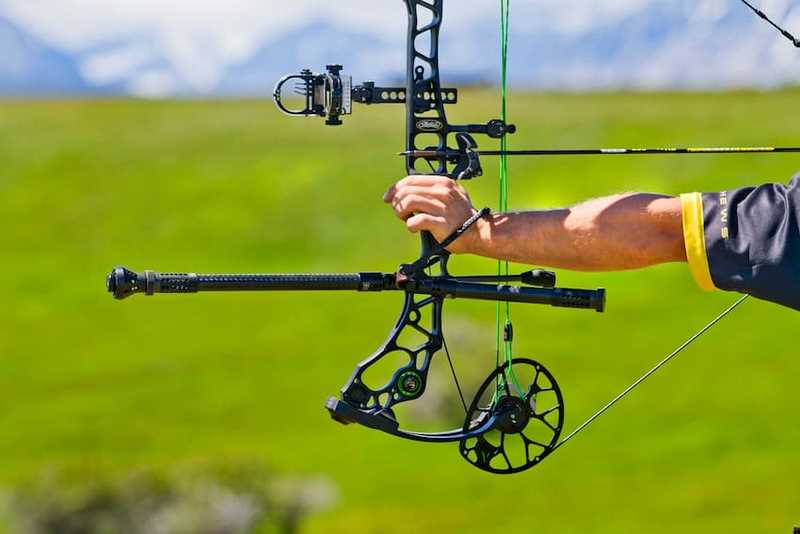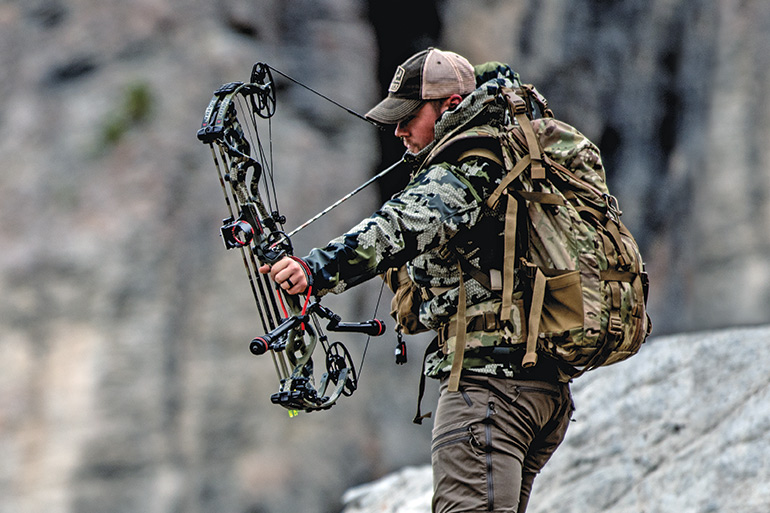Unlocking Precision: The Benefits of Using Archery Stabilizers
Unlocking Precision: The Benefits of Using Archery Stabilizers
Blog Article
The Ultimate Guide to Choosing the Right Archery Stabilizer for Enhanced Accuracy
Archery is a sporting activity that demands precision and precision, and picking the best devices is critical for achieving ideal results. Amongst the different devices offered, an archery stabilizer plays a significant function in improving accuracy. Nonetheless, with a lot of options on the market, it can be overwhelming to figure out which stabilizer is the best fit for your needs. In this thorough guide, we will certainly check out the vital factors to consider when selecting an archery stabilizer for boosted precision. From discovering the ideal length to comprehending the various designs and products, we will delve right into every little thing you need to recognize to make an informed decision. So, whether you are a seasoned archer looking to update your devices or a newbie looking for assistance, join us on this trip as we unwind the secrets to choosing the best archery stabilizer.
Length: Discovering the Optimal Stabilizer Size
Determining the suitable stabilizer size is important when choosing an archery stabilizer for optimum efficiency. A stabilizer that is too long can make the bow feel challenging and top-heavy to regulate, while a stabilizer that is also brief may not offer adequate stability and dampening of vibrations.
A longer stabilizer, normally ranging from 8 to 12 inches, can supply better security and reduce bow torque. This is especially advantageous for archers that shoot with a high draw weight or those that have a propensity to torque the bow throughout the shot. The included length helps to distribute the weight uniformly and counterbalance any type of torque or activity.
On the various other hand, a much shorter stabilizer, usually between 4 to 7 inches, provides more ability to move and quicker feedback. It is preferred by archers that fire with a lower draw weight or those that call for even more movement, such as hunters or 3D shooters. The much shorter length permits less complicated movement with tight spaces and faster changes.
Ultimately, the optimal stabilizer size is an issue of individual choice and shooting design. It is suggested to trying out different lengths and observe the effects on security and precision. Consulting with experienced archers or experts can additionally supply beneficial understandings and recommendations.
Weight: Determining the Appropriate Stabilizer Weight
After taking into consideration the ideal stabilizer length, the next vital variable to consider when selecting an archery stabilizer is identifying the appropriate stabilizer weight - archery stabilizer. The weight of the stabilizer plays an essential role in improving precision and security during the shot
The weight of the stabilizer affects the balance and control of the bow. A heavier stabilizer can provide raised security and control, particularly for shooters with a tendency for irregular shots or unsteady hands. It aids to take in the vibrations and recoil produced by the bow, reducing torque and reducing the impact on the arrowhead's trip.
On the various other hand, a lighter stabilizer enables for a quicker and more receptive bow. It can be beneficial for shooters that prioritize ability to move and rate over stability. Lighter stabilizers likewise lower fatigue during lengthy shooting sessions or competitors.
To determine the appropriate stabilizer weight for your needs, it is very important to consider your capturing design, physical strength, and bow setup. Explore various weights and observing the influence on your capturing performance is blog crucial to finding the perfect equilibrium.
Eventually, the optimum stabilizer weight will certainly vary for each and every private archer. It is recommended to begin with a modest weight and make changes based on personal preference and capturing outcomes. Bear in mind, the goal is to attain a regulated and steady shot, while likewise maintaining convenience and ease of usage.
Materials: Choosing the Right Materials for Sturdiness and Efficiency
When picking an archery stabilizer, it is crucial to very carefully consider the materials made use of in its building to guarantee resilience and maximize performance. The option of products can substantially influence the general quality and performance of the stabilizer.
One of one of the most commonly made use of materials for stabilizers is carbon fiber. Carbon fiber offers a high strength-to-weight proportion, making it lightweight yet incredibly strong. This product soaks up vibrations and decreases bow torque, resulting in improved stability and precision. In addition, carbon fiber stabilizers are resistant to temperature level adjustments and are much less likely to warp or bend in time.
An additional prominent product for stabilizers is aluminum. Aluminum stabilizers are understood for their sturdiness and rigidity. They provide excellent moistening capacities, lowering the quantity of shock and vibration transferred to the shooter's hand. Aluminum stabilizers also offer a variety of customization alternatives, enabling archers to change the weight and length to suit their choices.
Some stabilizers are built using a combination of products. For instance, a stabilizer might have a carbon fiber core wrapped in an aluminum covering. This hybrid style integrates the best high qualities of both materials, supplying optimum stability, durability, and efficiency.
Style: Comprehending the Different Stabilizer Styles and Their Results
Taking into consideration the materials utilized in archery stabilizers, it is essential to now explore the different layouts of stabilizers and their particular impacts. The layout of an archery stabilizer plays a critical function in enhancing accuracy and decreasing resonance throughout the shot. There are numerous different designs available in the market, each with its own unique attributes.

Another preferred layout is the side bar stabilizer. This style involves attaching a short pole sideways of the bow, parallel to helpful hints the main long rod. Side bar stabilizers aid in counterbalancing the weight of accessories, such as sights or quivers, and offer additional security to the bow.
Some stabilizers feature flexible weights. These stabilizers permit archers to adjust the equilibrium and feeling of their bows by including or getting rid of weights. This feature is especially useful for archers who like a certain weight distribution or wish to try out various setups.
In addition, some stabilizers integrate moistening innovation to reduce resonance and sound. These stabilizers commonly have built-in dampeners or utilize materials that absorb vibrations, causing a smoother and quieter shot.

Accessories: Checking Out Additional Devices for Boosted Stability
These accessories are made to function in conjunction with the archery stabilizer to give an also better level of security and precision. One such device is the V-bar or the side stabilizer install.
An additional device that can improve security is a bow sling. A bow sling is a band that connects to the bow and enables the archer to maintain a relaxed grip on the bow take care of without the worry of dropping it (archery stabilizer). This loosened up grasp helps to decrease muscular tissue stress and permits an extra regular and secure shot
Additionally, a stabilizer weight system can be used to make improvements the equilibrium and security of the bow. These weight systems normally consist of little weights that can be included or eliminated from the stabilizer to change the balance point of the bow. By locating the optimum balance factor, archers can achieve a more accurate and stable shot.
Verdict
In conclusion, selecting the appropriate archery stabilizer involves considering variables such as size, weight, materials, layout, and added devices. The ideal stabilizer length and weight will depend on private choices and shooting style.
Establishing the optimal stabilizer length is important when choosing an archery stabilizer for optimum efficiency. A stabilizer that is too long can make the bow feel top-heavy and tough to control, while a stabilizer that is also brief may not supply adequate security and dampening of resonances - archery stabilizer.Taking right into account the materials used in archery stabilizers, it is important to now dive into the various layouts of stabilizers and their respective results. Side bar stabilizers aid in reversing the weight of accessories, such as quivers or sights, and offer added security to the bow
These weight systems generally are composed of small weights that can be added or removed from the stabilizer to change the equilibrium point of the bow.
Report this page